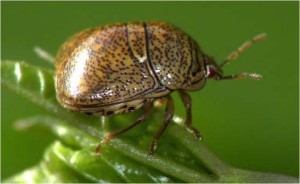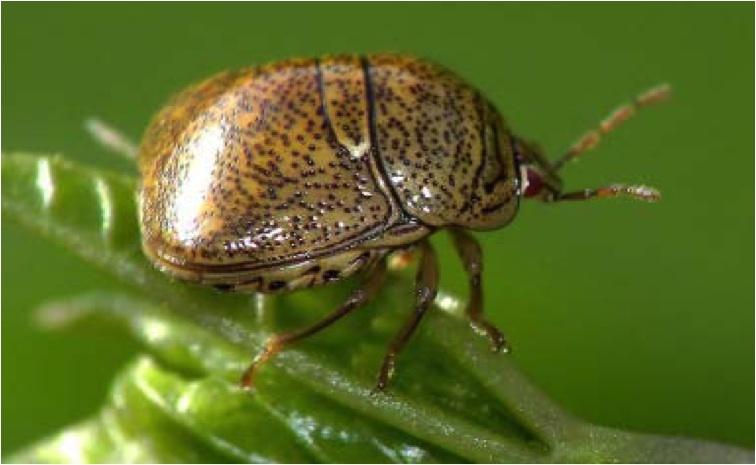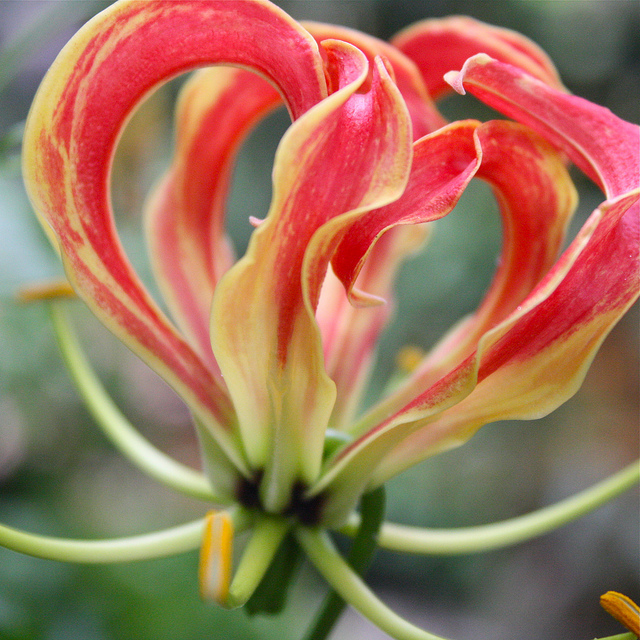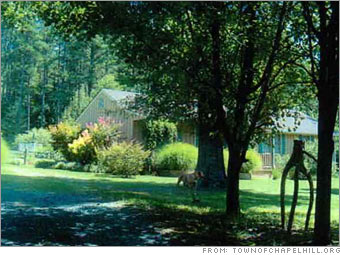Gardening for Everyone
by Donald McInnes, Ph.D.
Today was the first time I found a kudzu bug inside my house.
Kudzu bugs, Megacopta cribraria, are new to SC. In fact, they’re new to the Western Hemisphere. They were first discovered in Griffin County, Georgia, in the fall of 2009. No one knows exactly how they got here (or if they do, they’re not telling), but when I tell you they are native to East Asia, you can imagine how. Like imported fire ants* and several other exotic pests, they probably came here as a side effect of human commerce. Since 2009, kudzu bugs have found their way to Alabama, Florida, both Carolinas and Virginia.
Kudzu bugs are a shiny, speckled, platinum color and about the size of lady beetles. Their shape is a little different, however. While lady beetles are almost perfectly hemispherical, kudzu bugs are a bit boxy, their rear ends flattened and nearly perpendicular to their sides. In flight kudzu bugs also resemble lady beetles—they are capable, but not swift flyers. There are great photos of kudzu bug eggs, nymphs and adults at http://naturecloseups.com/posts/globular-stink-bug-invasive.
Megacopta cribraria has a number of other common names, including globular stink bug, lablab bug and bean plataspid. The name kudzu bug comes from its predilection to dine on kudzu and other members of the legume family. This includes soybeans, something that has soy farmers quite worried (soy bean production in SC tops well over $100 million annually).
Kudzu bugs have something else in common with lady beetles—they can occur in huge aggregations in the fall, when they seek shelter from the cold weather. And like lady beetles, sometimes they make their way into our homes and become, not destructive, but sometimes a serious nuisance.
If you find kudzu bugs in your house one day, like with lady beetles, your vacuum is the tool of choice. Don’t be tempted to swat or crush’em—they can stain and release a foul odor. After vacuuming, don’t leave the vacuum in the house—the bugs might crawl back out. Empty the vacuum into soapy water or take the bag outside (the bag can also be put in plastic and into the freezer for a day or two to kill the bugs). You can use a nylon stocking secured to the vacuum hose with a rubber band to collect the bugs (or beetles) into the stocking, which then can be removed from the vacuum hose and emptied or disposed of.
Be careful handling kudzu bugs. They release a substance when disturbed that can be irritating to skin and excruciating to eyes (www.walterreeves.com/gardening-q-and-a/kudzu-bug-stinkbug-damage-to-eyes). NC State has a factsheet with a good discussion of controlling home infestations (www.ces.ncsu.edu/depts/ent/notes/Urban/kudzubug.htm).
Home gardeners may find kudzu bugs a significant threat to bean production. I was unable to find much in the way of control recommendations. I don’t believe they’ll be difficult to control, although I don’t think soaps or oils will have much effect. The contact pyrethroid insecticides (those with a “thrin” ending—permethrin, bifenthrin, lambda-cyhalothrin, etc.) should do the job, as should spinosad, an organic contact insecticide (although www.livingwithbugs.com/PDFiles/mfs13.pdf suggests it is not too effective on true bugs).
The silver lining to our kudzu bug invasion is that it is a significant impediment to one of our worst invasive weeds. Kudzu and the kudzu bug hail from the same part of Asia. Preliminary studies suggest that kudzu bug feeding significantly decreases the growth of the kudzu vine—Kudzu bugs bug kudzu.
*In the U.S. there are two species of fire ants that were introduced here from South America, The Black Imported Fire Ant and the Red Imported Fire Ant, which are thought to have arrived in the U.S. at Mobile, AL by ship in the period between the two World Wars. There are also a handful of native fire ant species (not as aggressive as the exotic species), including two in SC.
Donald McInnes has degrees in biology from Duke, Northwestern and Florida State. He has worked for Clemson Extension in Richland County for more than a decade, assisting thousands of consumers with landscape, garden, wildlife and pest control questions. He is also the owner of Southeastern Environmental Design, a landscape coaching, consulting and design service, and until recently chaired the City of Columbia’s Tree and Appearance Commission. If you’d like help with your landscape, he can be reached at seenvdes@aol.com.





